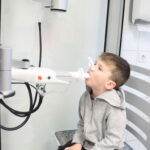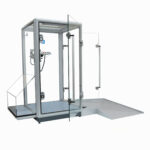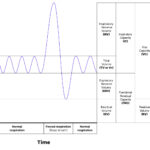A body plethysmograph is a medical device used to measure various aspects of lung function. Here are the key parameters it can measure:
- Lung Volumes: It can measure total lung capacity (TLC), functional residual capacity (FRC), and residual volume (RV). These measurements help in assessing how much air the lungs can hold at different phases of the breathing cycle.
- Airway Resistance: It can assess airway resistance, which is important for diagnosing and monitoring conditions like asthma and chronic obstructive pulmonary disease (COPD).
- Thoracic Gas Volume (TGV): This is the volume of gas in the chest, including any trapped gas, and is measured at the end of a normal exhalation.
- Specific Airway Conductance (sGaw): It measures the ease with which air can flow through the bronchial tubes.
These measurements are critical for diagnosing, evaluating, and managing respiratory conditions, providing a comprehensive view of pulmonary function.




